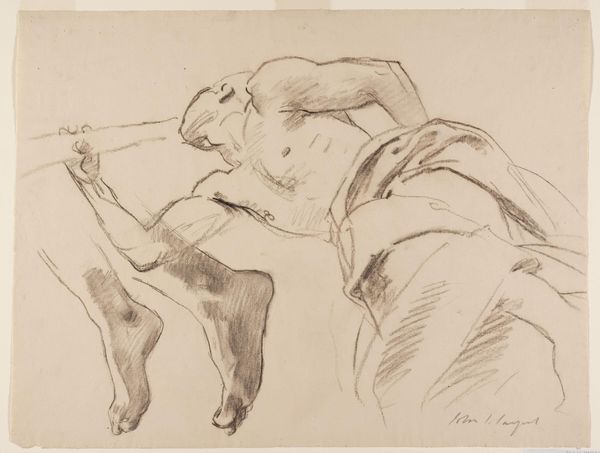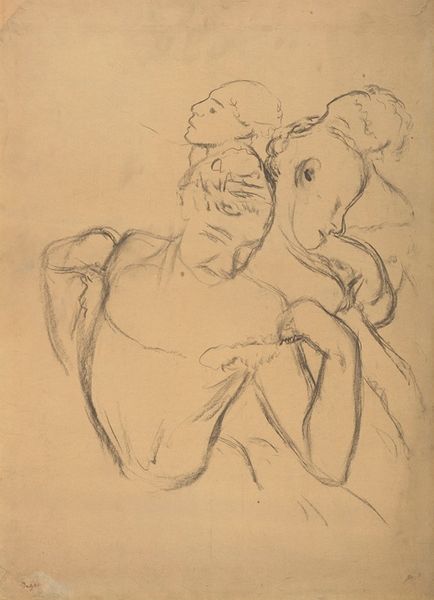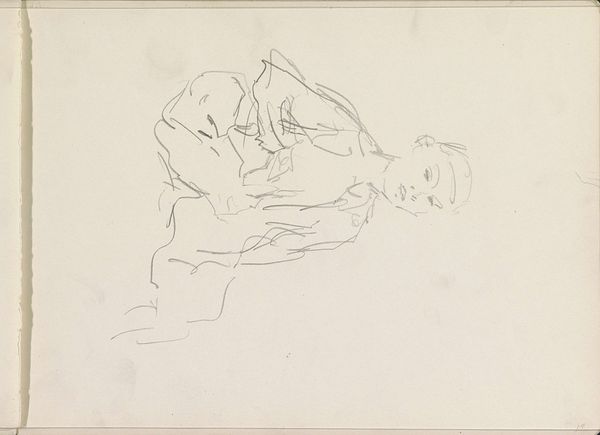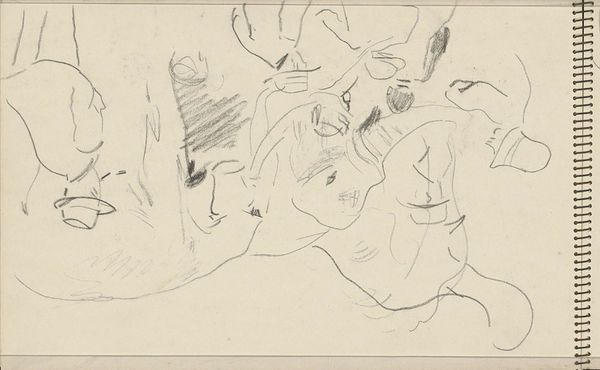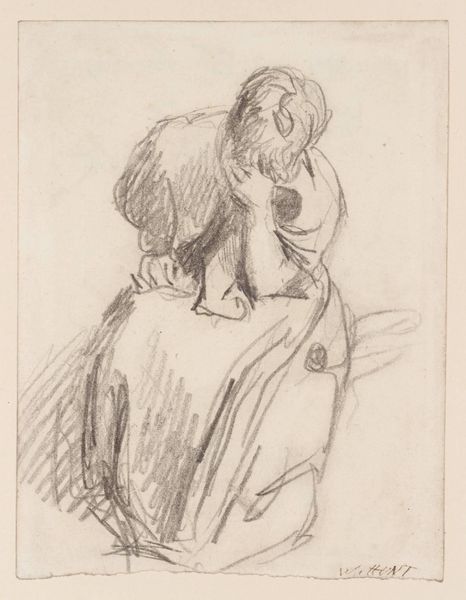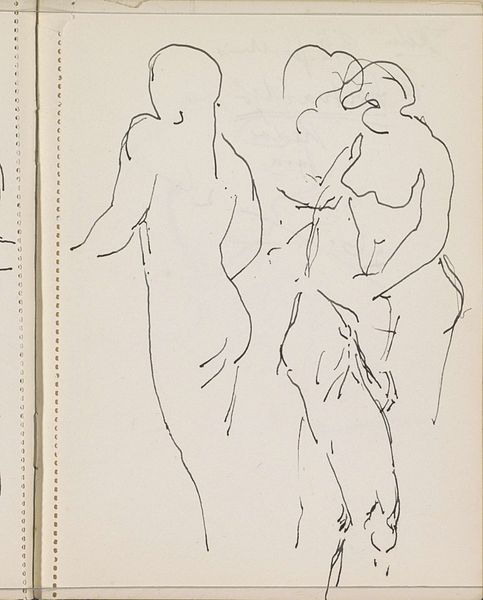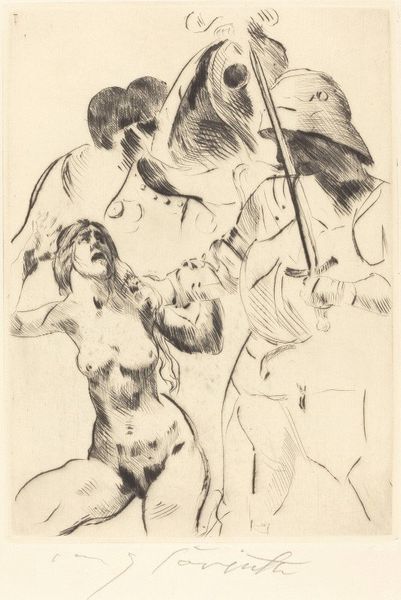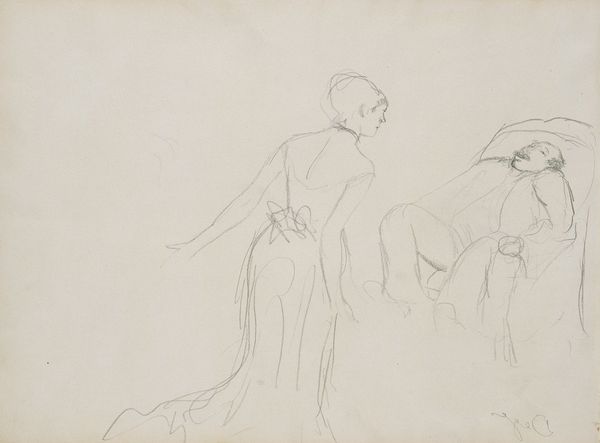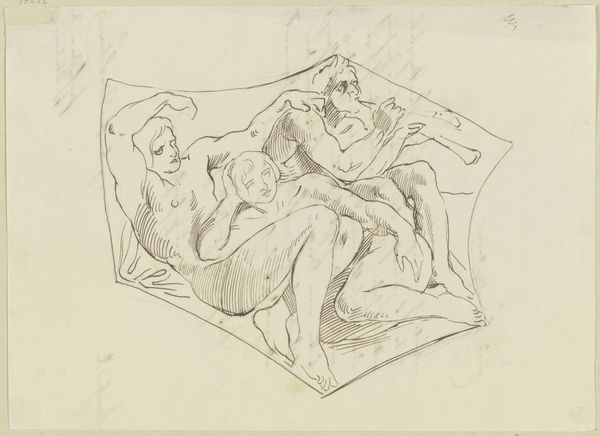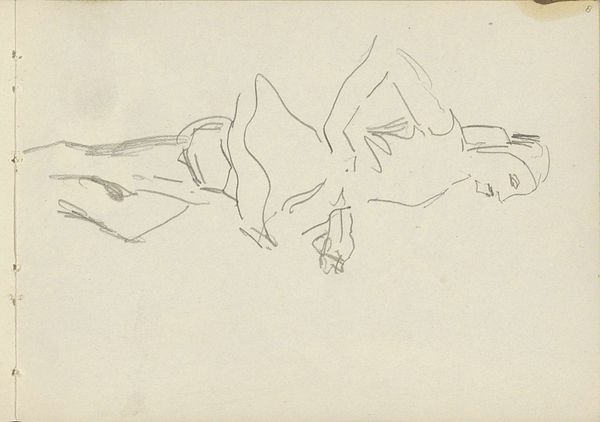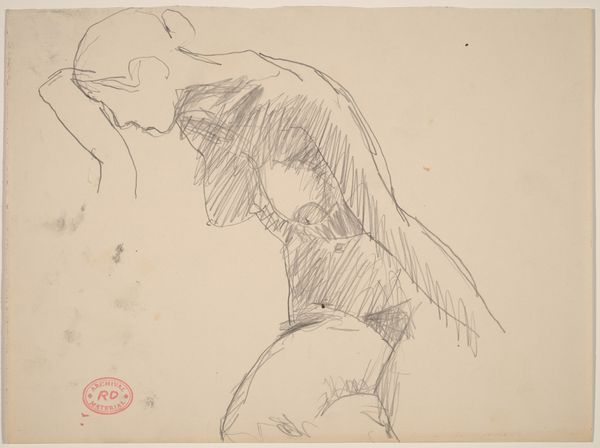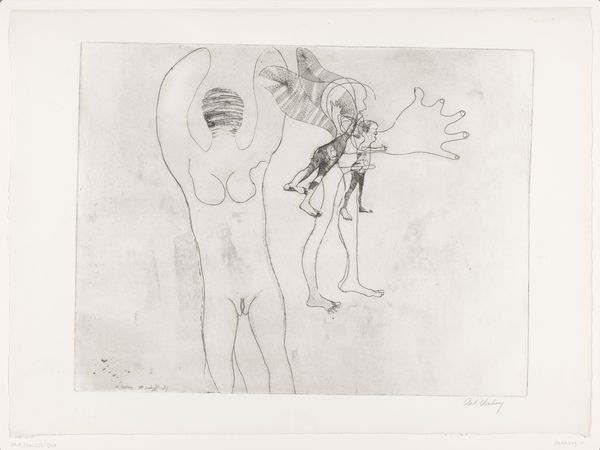
drawing, ink
#
portrait
#
drawing
#
figuration
#
ink
#
expressionism
#
line
#
portrait drawing
#
nude
#
erotic-art
Copyright: Public Domain: Artvee
Editor: Here we have Lovis Corinth's 1914 ink drawing, "The Reconciliation." The linework is so raw and expressive. There is a certain… uneasiness in the subject. What historical context shapes our understanding of this piece? Curator: Absolutely. Remember that 1914 wasn’t just *any* year; it was the beginning of World War I. Consider how that global upheaval might inform the title, "The Reconciliation". Corinth, working within an Expressionist style, wasn't aiming for straightforward representation. He was capturing something rawer, more psychological. Who are these figures for you, how might the politics of intimacy come into play? Editor: That's fascinating! I guess, visually, I assumed it was a romantic encounter, but with the war as a backdrop, it almost feels… fraught? Is this a public display of an idealised healing that the society desired or some deeply personal struggle during this historical context? Curator: Exactly! The tension lies in that duality. Is it truly reconciliation, or a desperate grasp at connection amidst chaos? Expressionism, as a movement, frequently engaged with the anxieties of modernity, so the "rawness" you perceived initially isn’t merely stylistic; it's part of the emotional content. The public display of intimate issues and internal conflict are tightly woven. Editor: So, Corinth uses a personal scene to reflect larger societal fractures... Does that interpretation impact how galleries displayed works like this during or after the war? Curator: Undeniably. Expressionist works, especially those grappling with psychological and emotional turmoil, often faced censorship or were relegated to the avant-garde fringes. Galleries and museums are institutions too; they have histories and politics. Understanding the sociopolitical climate and institutional frameworks surrounding art, even seemingly intimate drawings like this one, can significantly deepen our appreciation. What did you think about how "reconciliation" looks from this piece? Editor: That really shifts my perspective. It highlights how even seemingly private artworks can be deeply enmeshed in public narratives. Thinking about "The Reconciliation" as more of a political statement adds so many layers. Curator: Precisely. Art serves as a mirror reflecting individual emotions, socio-political ideas and beliefs in its historical and cultural context.
Comments
No comments
Be the first to comment and join the conversation on the ultimate creative platform.
